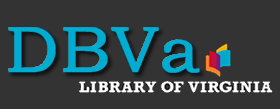CONTENT WARNING
Materials in the Library of Virginia’s collections contain historical terms, phrases, and images that are offensive to modern readers. These include demeaning and dehumanizing references to race, ethnicity, and nationality; enslaved or free status; physical and mental ability; and gender and sexual orientation.
Context
At the turn of the twentieth century, many Black women advocated women's voting rights, but their voices often went unheard and their actions were ignored or unwelcomed by the larger white-dominated woman suffrage movement. This was particularly true in southern states, where white fears of Black enfranchisement dominated. Once women secured the vote, however, many of Virginia’s Black women made clear their demand to be represented at the ballot box.
In Virginia, Black women were not allowed to join white suffrage associations such as the Equal Suffrage League of Virginia. However, they discussed voting rights at their own women's club meetings and formed political study groups. When the National Association of Colored Women met at Hampton Institute in 1912, members attended seminars on woman suffrage and also held a suffrage parade. In 1913, despite the attempts of southern suffragists to limit the participation of Black women in the national suffrage parade in Washington, D.C., Lynchburg native Jimmie Bugg marched with other Delta Sigma Theta members from Howard University.
Black women interested in voting rights could also learn more about the issue in national publications like The Crisis (published by the National Association for the Advancment of Colored People) and in their local newspapers. As general editor of the Saint Luke Herald, Richmond banker and civil rights activist Maggie Walker published many articles and editorials in support of the cause while also pointing pointed out the inherent prejudice in the white-dominated movement, including this editorial published on May 23, 1914.
When the Nineteenth Amendment was ratified in 1920 and women were authorized to vote, thousands of Black women across the country and in Virginia registered to vote. In Richmond, Maggie Walker and Ora Brown Stokes led voting drives in September 1920 that enabled more than 2,400 Black women to register in the city. The process could be complicated and time-consuming and Black women were often kept waiting until white women had registered first. To register, a woman had to pay the required poll tax and then take her receipt to the registrar's office, where she had to provide her personal identification and answer any questions asked by the registrar to demonstrate that she was qualified to vote. The time, cost, and highly subjective questions asked by registrars limited the number of Black women who registered to vote. Black voter participation remained low in Virginia until passage of the Voting Rights Act in 1965 and the 1966 U.S. Supreme Court decision that outlawed poll taxes in all elections.
Citations: "Woman's Suffrage" editorial, St. Luke Herald, May 23, 1914, Library of Virginia (microfilm) and Richmond City Election Records, 1920, "Colored Female Voters," Madison Ward, First Precinct, Library of Virginia.
Related Document Bank entries
Voting Qualifications in Virginia, Equal Suffrage League Pamphlet, 1910s
Evelyn Butts Challenged the Poll Tax, Virginian-Pilot (Norfolk), 1966
Learn more about the woman suffrage movement in Virginia in the Library's online exhibition, We Demand.
Learn more about registering to vote in Virginia in The UncommonWealth blog: "Really and Truly a Citizen:" Virginia Women Register to Vote in 1920
Related Dictionary of Virginia Biography entries:
Maggie L. Walker
Ora Brown Stokes
Standards
Suggested Questions
For detailed lesson plan options, visit our Lesson Plan on the Woman Suffrage Movement in Virginia.
Preview Activity
Scan It: Scan the St. Luke Herald editorial. What words stand out to you, and why? How do they characterize white women’s activities?
Post Activities
Analyze: Read the St. Luke Herald editorial and describe what it says about Black men. Why do you think the author characterized them the way they did? What do you think of what she said? Why?
Dig Deeper: Read the Equal Suffrage League's pamphlet on Voting Qualifications (https://edu.lva.virginia.gov/dbva/items/show/157). How do you think Maggie Walker and the voting registrants would have thought of this pamphlet? How might they have reacted? Do you think it would have been a surprise to them to read it? Why or why not?
Social Media Post: Imagine you are assisting with Maggie Walker's voter registration drive and need to make a related Instagram post or reel. What would you say and why? How would you encourage people to register and vote?
